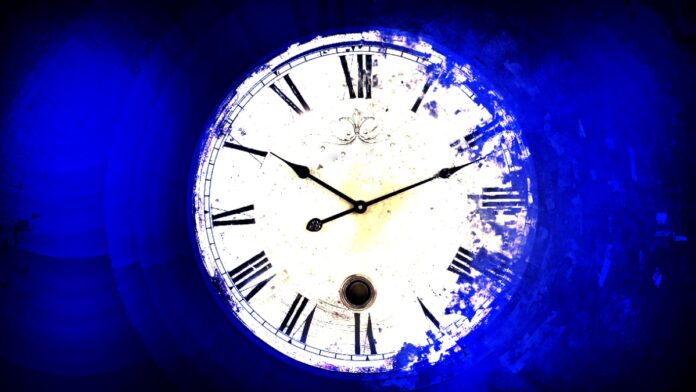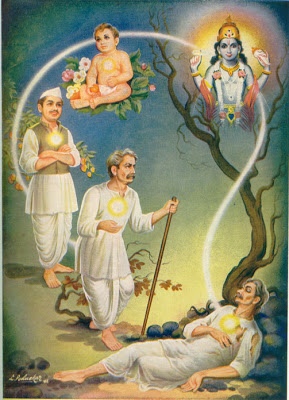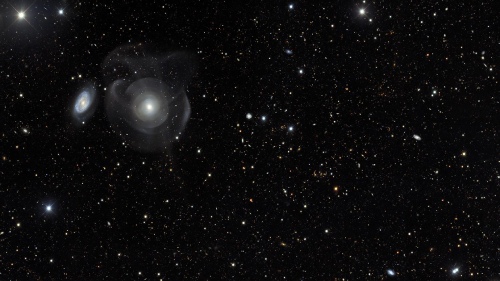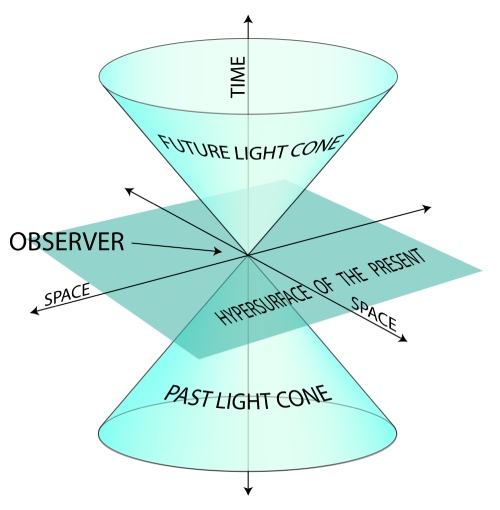You probably think that defining Time is a straightforward task, hours and minutes, and the passing of one day to the next. However, Time’s ultimate nature remains a mystery; as evidenced by all the exceptions and mysteriousness, it confronts us throughout an ordinary day. In this article, learn how Time is still a mystery.
Contents
- 1 What is Time?
- 2 What is the Shortest Time Measurement?
- 3 Time and Leap years
- 4 Cyclic Time and one-way Time
- 5 Space’s Deep Time
- 6 Is it true that Time existed before the Big Bang?
- 7 What Is Space-Time and How Does It Work?
- 8 What Effect Does Speed Have on Time?
- 9 What Effect Does Gravity Have on Time?
- 10 Is Time A Fundamental or Emergent Reality Component?
- 11 Dilation of Time
- 12 Conclusion and Final Thoughts
- 13 Sources
What is Time?
Time is a popular term for the duration of an experience and a fundamental quantity in measurement systems. However, according to physics, Time is defined by its measurement; thus, Time is the reading on a clock. It is a scalar quantity typically expressed by the symbol t, and in classical, non-relativistic physics, it is frequently characterized as a fundamental quantity like length, mass, and charge. Other ideas, such as motion, kinetic energy, and time-dependent fields, can be derived mathematically by combining Time with different physical quantities. The core of recordkeeping is timekeeping, which involves complex technological and scientific concerns.
What is the Shortest Time Measurement?
One billionth of a second is a nanosecond, which is long compared to a femtosecond, which is one quadrillionth of a second; an attosecond is one quintillionth of a second, or yoctosecond, one trillionth of a second. According to quantum theory, the shortest length of Time that can be measured is known as ‘Planck Time, which is 10 to the power -43 seconds, beyond which neither Time nor space can be split.
Therefore, the closest physics can get to the beginning of Time is 10 to the power -43 seconds, which is equivalent to 0.0000000000000000000000000000000000000000001, and it is the Shortest Time Measurement. The four fundamental forces are thought to have been united during the Planck epoch (0 to 10 to the power -43 seconds), the earliest period of the Universe’s history.
Time and Leap years
We add an extra day to February for leap years every four years. This is done to make up for Earth’s orbit around the sun isn’t an even number. It takes around 365.242 days to spin around Sol rather than 365 days. We would lose about six hours per year if we didn’t add the leap day, resulting in very incorrect calendars as the decades progressed.
In theory, “leapers” born on February 29 are only allowed to celebrate their birthdays once every four years. So if you are a leaper, then you can figure out your age by counting your birthdays; if you do that, it means if you are 32 years old, then according to this theory, you are just eight years old.
Cyclic Time and one-way Time
Time is linear in much of our culture, exploding into the future like an arrow. But, unfortunately, there will never be another twenty-first century, nor will there ever be another 2021. The solar system’s clock resets every so often, but human existence is a one-way street.
In Sanatan, Dharma reincarnation follows human existence to be cyclical. For them, Time’s cyclical nature allows us to return and learn from our mistakes rather than being a one-way trip to extinction. Our spirit, like the seasons, returns to try life until we do it right, eventually stopping the cycle of death and rebirth by gaining enlightenment.
Many people find the concept of an oscillating universe intriguing. Rather than infinite expansion into oblivion, the oscillating Universe alternates between Big Bang and Big Crunch, with no origin or conclusion. The Baum-Frampton model of the cosmos recently offered new hope for this hypothesis, predicting that dark energy could enable oscillations while avoiding the painful heat deaths that destroyed prior “pulsation” models.
Space’s Deep Time
Deep Time is the strangest because the human mind can’t comprehend large-scale temporal units of deep space. Instead of clear notions, epochs and aeons are only words. The larger the time unit, the further removed it is from our daily lives and the more mysterious it becomes.
Deep Time, measured in million-year increments, is used to debate and understand cosmology, geology, and evolution mechanisms. For example, the Big Bang is thought to have occurred 13.7 billion years ago on a profound scale, whereas Earth was formed around 4.6 billion years ago. Simple living forms began to appear someone billion years later.
Many people cannot accept these magnificent timelines, rejecting well-established carbon-14 and doppler shift dating techniques because their minds cannot comprehend them.
Is it true that Time existed before the Big Bang?
According to Einstein’s theory of relativity, space and Time came into being due to the Big Bang and its outward expansion. Therefore, before opening and Time existed, everything was compressed into a singularity more minor than a subatomic particle, and the Universe is thought to be roughly 13.7 billion years old. However, while most scientists now believe Time began with the Big Bang, the argument is far from over, and quantum physics and many other hypotheses continue to raise new questions about the cosmos before the Big Bang.
What Is Space-Time and How Does It Work?
Spacetime is any mathematical model which fuses the three dimensions of space and the one dimension of Time into a single four-dimensional manifold. Spacetime diagrams can be used to visualize relativistic effects, such as why different observers perceive differently where and when events occur. Read more about Spacetime here: Spacetime: A Mathematical Model that Combines Dimensions of Space and Time.
Although Albert Einstein’s particular theory of relativity was published in 1905, it was Hermann Minkowski, Einstein’s former undergraduate mathematics teacher. He originally proposed that space and Time may be seen as components within a single four-dimensional framework known as Spacetime.
Minkowski famously said: “Henceforth space by itself, and time by itself, are doomed to fade into mere shadows, and only a kind of union of the two will preserve an independent reality”.
As a result, physicists currently consider all physical reality to be contained within a single geometric entity known as the Spacetime continuum, with all events characterized by their spacetime locations. The consequences of this suggest that history is “already there” and exists simply as a timeless thing. Minkowski spacetime is commonly shown as a two-dimensional lightcone diagram, inside which every object, including people, is positioned along “worldlines” that are fixed and permanent. Numerous physicists have discovered that pairs of particles can communicate with each other across Time by using their timeline as a quantum bridge, which supports this concept.
According to general relativity, Spacetime expands and contracts in response to the momentum and mass of adjacent matter. The theory was valid, but confirmation was all that was required. NASA’s Gravity Probe B provided the proof, demonstrating that space and Time are related.
What Effect Does Speed Have on Time?
In 1905, Einstein introduced his particular relativity theory, which distinguished the absolute nature of Time, space, and motion from its relative aspects. He did so after learning that the Speed of light, which is 186,000 miles per second, is constant in all reference frames, a groundbreaking discovery that opened up strange possibilities when the formula Speed = Distance/Time was applied. Other equation elements begin to change as one approaches the Speed of light, with distances shortening and Time stretching.
For example, An astronaut travelling at 99 per cent the Speed of light would experience Time seven times slower than an observer, so if he travelled at 99 per cent the Speed of light to a destination 3.5 light-years away, he would complete the round trip in 1 year. In contrast, on Earth, more than seven years would have passed. However, if he could achieve a speed of 99.999 per cent of the Speed of light, that amount would grow to 223 years.
Time does not need to travel at such incredible speeds to dilate, as clocks on board GPS satellites travelling at speeds of 14,000 km/hr move faster than clocks on Earth by roughly 38 microseconds every day. This would result in more than 10 kilometres of daily navigational errors without compensation. So now we know that Speed affects Time. Does gravity affect Time?
What Effect Does Gravity Have on Time?
Einstein’s description of space as a dynamic phenomenon warped by the matter it contains, rather than a static stage on which events unfold, tilted the scientific world in 1915. This resulted in a new understanding of gravity as a curve disturbance in Spacetime induced by large objects and a recognition of Time as a flexible phenomenon whose rate may be influenced by gravity.
For example, objects close to massive objects perceive Time slower than objects further away. An atomic clock in a valley will run slower than one position on a mountain, with a weaker gravitational influence. Similarly, someone orbiting a spaceship close to a black hole but outside of its event horizon may only experience a few days, while those further away may have experienced countless aeons.
Is Time A Fundamental or Emergent Reality Component?
Scientists are debating whether Spacetime, like the elementary particles represented in the standard model and the fundamental forces of nature acting on them (gravity, electromagnetism, strong and weak nuclear forces), is an essential component of physical reality or is emergent and only has a derivative existence.
For example: what causes the force between particles? Is it other particles, spacetime twisting, or something else entirely? At this point, scientists are unsure, though they know that conventional theories of Spacetime begin to break down when applied to black holes or the Big Bown.
Theoretical physicist Arkani-Hamed assumed that it could be an emergent entity and explained it as:
“Our three-dimensional Universe exists in a higher-dimensional realm. Indeed, it’s possible that dimensions and space aren’t fundamental conceptions. We don’t think the concept of space will survive a more detailed explanation of reality. On the other hand, space is probably the result of something deeper. Even Time, I believe, is an emergent phenomenon.”
A recent intriguing hypothesis proposes that Time is a side effect of quantum entanglement, and quantum physicists have recently conducted an experimental test on the subject.
“The key is that time is measured in “events,” and “events” happen when the quantum states of two systems become entangled, but only to those systems. A system appears static to an “observer” who has not become entangled, and no event has occurred. According to the Copenhagen interpretation, the “wavefunction has collapsed” according to the entangled observer, but not according to the unentangled observer.”
Dilation of Time
Although physicists regard Time as an essential dimension of the world, Einstein’s theory of relativity has proven that Time is not merely one continuous, linear flow. Instead, as discussed above, Speed and gravity affect Time, which scientists initially assumed to be simple and absolute.
For example: Have you ever wondered how your phone knows you just missed a turn and is asking you to make a U-turn? Your phone’s global positioning system (GPS) is connected to a network of 24 satellites, each of which has accurate atomic clocks. However, because they are in a slower time stream than ground clocks, these satellites “lose” seven microseconds per day. Without regular adjustment, even the tiniest time loss would quickly add up, resulting in mistakes as big as six kilometres each day.
Because acceleration “slows down” Time, GPS systems may make constant minute changes. The quicker something goes, the “slower” it ages. This phenomenon is known as “time dilation” by physicists. A space traveller under its influence could return to Earth after a 20-year journey and find himself hundreds of years in the future. To take Time dilation to its logical conclusion, when we get closer to the Speed of light, it’s likely that Time will cease, and immortality will begin.
Conclusion and Final Thoughts
According to the theory suggested by a group of Spanish scientists led by Prof. Senovilla and a University of Cambridge cosmologist, Time is slowing down and may eventually grind to a halt, resulting in all of existence being frozen “like a snapshot” within a single moment in Time, similar to how a wind-up mechanical timepiece loses its energy.
Gary Gibbons commented on the claim:
“We believe time appeared at the Big Bang, and if time can appear, it can also vanish — it’s just the opposite effect.”
Then is it possible that Time will stop one day?
The new theory casts doubt on the widely held belief that the Universe is expanding, with ‘dark energy’ speeding up the process by pervading all available space. The difficulty is that scientists are still baffled by dark energy. Moreover, the expanding universe theory violates gravity and other physics rules that say that after the Big Bang, there should have been a gradual slowing of expansion as energy levels fell.
According to Prof. Senovilla’s idea, distant galaxies only appear to be speeding away from each other because deep-space telescopes are peering back in time to a point when Time was moving faster, making them appear to be accelerating from our perspective.
Eternity, on the other hand, is defined as unlimited and unending. Although humans are mainly incapable of comprehending eternity, we have at least attempted to represent it. The circle has no beginning or end, and the “lemniscate” symbol, which resembles a horizontal figure eight, is perhaps the two most famous symbols of eternity.
According to the doctrine of theological eternity, we all have a definite beginning in Time but no actual end. It is assumed that both mind and identity survive death, allowing specific souls to dwell indefinitely.
Sources
- Considine, D. M. (1985). Process instruments and controls handbook. New York: McGraw-Hill.
- Newton-Smith, W. H. (2018). The structure of Time. Routledge(PDF).
- Bouwsma, O. K. (1954). The Mystery of Time (or the Man who did not know what Time is). The Journal of Philosophy, 51(12), 341-363.
- Coward, H. (1999). Time in Hinduism. Journal of Hindu-Christian Studies, 12(1), 8.
- Salatino, D. R. (2019). The Mystery of Time. Inter. J. Res. Methodol. Soc. Sci, 5(3), 1-29.
FACT CHECK: We strive for accuracy and fairness. But if you see something that doesn’t look right, please Contact us.
DISCLOSURE: This Article may contain affiliate links and Sponsored ads, to know more please read our Privacy Policy.
Stay Updated: Follow our WhatsApp Channel and Telegram Channel.

















Quantum mechanics is a concrete result of the General Theory of
Relativity. According to the General Theory of Relativity, a clock on
Jupiter lags behind a clock on Earth. A clock on earth lags behind a
clock on the moon. they ended the theory here. However, I continue the
theory with the result I deduced from the Time Flow Formula. One hour
on the moon lags behind a clock on the alpha ray. A clock in the Alpha
beam lags behind a clock in the Beta beam. a clock in beta ray lags
behind a clock in x ray. Concrete results of the General Theory of
Relativity begin to be seen as masses and energies get smaller. These
are the same theory. Large masses have a very long life. Small masses
have very short lifetimes. As the lifetimes get shorter,
transformations from mass to energy and from energy to mass begin. In
summary Quantum mechanics is a concrete result of the General Theory
of Relativity.
This is a result from the Timeflow Formula. (Timeflow=Time/Energy).
Every simple physics formula explains a law of nature. In the Timeflow
Formula; It tells that a time equal to the amount of energy will be
released in a physical process. You can find more information on my
website. (timeflow.org).
In addition,The flow of the thought energy intensity in our brain is
body pain, unhappiness and boredom, joy, happiness and love,
sleep, and finally death, respectively, from high energy to low
energy. At the moment
to sleep, if we had a good sleep, our thought energy is very close to
zero or zero. When the energy flow intensity increases in our brain,
according to the ‘Timeflow Formula (Timeflow=Time/Energy). The
timeflow will slow down. As the energy density (power) decreases, the
timeflow will accelerate. In the case of sleep and death, the timeflow
will be infinite. The timeflow formula explains very clearly and
simply that this situation, which is perceived as psychological time
is actually a purely physical event. I think it would be very useful
for psychology experts to evaluate the ‘Timeflow’ Formula and the
philosophical interpretation of the formula.